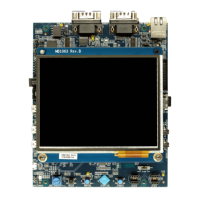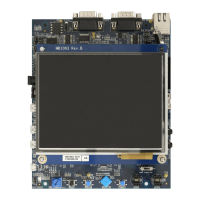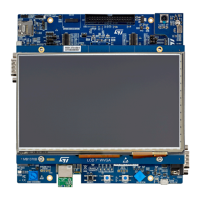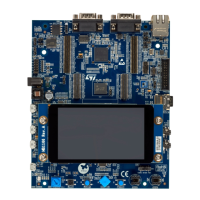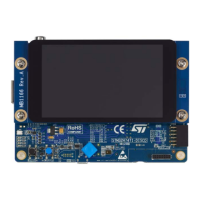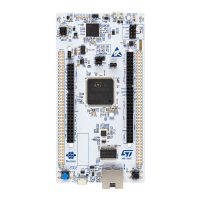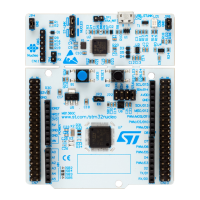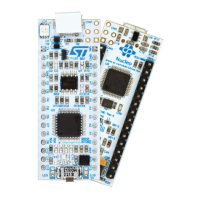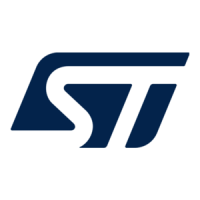5 Quick start
The STM32H5 Nucleo-144 board is a low-cost and easy-to-use development kit, to evaluate and start
development quickly with an STM32H5 series microcontroller in an LQFP 144-pin package.
Before installing and using the product, accept the Evaluation Product License Agreement from the www.st.com/
epla webpage. For more information on the STM32H5 Nucleo-144 board and demonstration software, visit the
www.st.com/stm32nucleo webpage.
5.1
Getting started
Follow the sequence below to configure the STM32H5 Nucleo-144 board and launch the demonstration
application (refer to Figure 4 and Figure 5 for component location):
1. Check the jumper position on the board as described in Table 4.
Table 4. Default jumper configuration
Jumper Definition Position Comment
JP1 External debug OFF -
JP2 Power source selection [1-2] STLK (5V_STLK from ST-LINK)
JP3 STLK_RST OFF -
JP4 VDD_MCU power selection
[1-2] (default) VDD_MCU supplied with 3V3_VDD
[2-3] (optional) VDD_MCU supplied with 1V8_VDD
JP5 IDD measurement ON MCU current measurement
JP6 Ethernet transmit data1 ON RMII_TXD1
2. For the correct identification of the device interfaces from the host PC and before connecting the board,
install the Nucleo USB driver available on the www.st.com/stm32nucleo website.
3. Power the board by connecting the STM32H5 Nucleo-144 board to a PC with a USB Type-A or USB Type-
C
®
cable through the USB connector (CN1). As a result, the PWR green LED (LD5), the COM LED (LD4),
and the PWR LED (LD6) light up, while the three user LEDs (LD1 to LD3) blink.
4. Press the user blue button (B1).
5. Observe how the blinking frequency of the three LEDs (LD1 to LD3) changes, according to the number of
clicks on the user button (B1).
6. The software demonstration and the several software examples that allow the user to exercise the Nucleo
features, are available at the
www.st.com website.
7. Develop your application using the available examples.
UM3115
Quick start
UM3115 - Rev 2
page 6/44
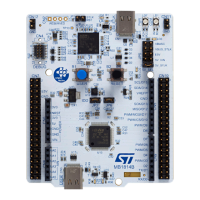
